Minecraft Earth, the groundbreaking future of the biggest game in the world, stars in the new issue of Edge magazine
Edge goes behind the scenes with the groundbreaking augmented-reality reinvention of Mojang's juggernaut
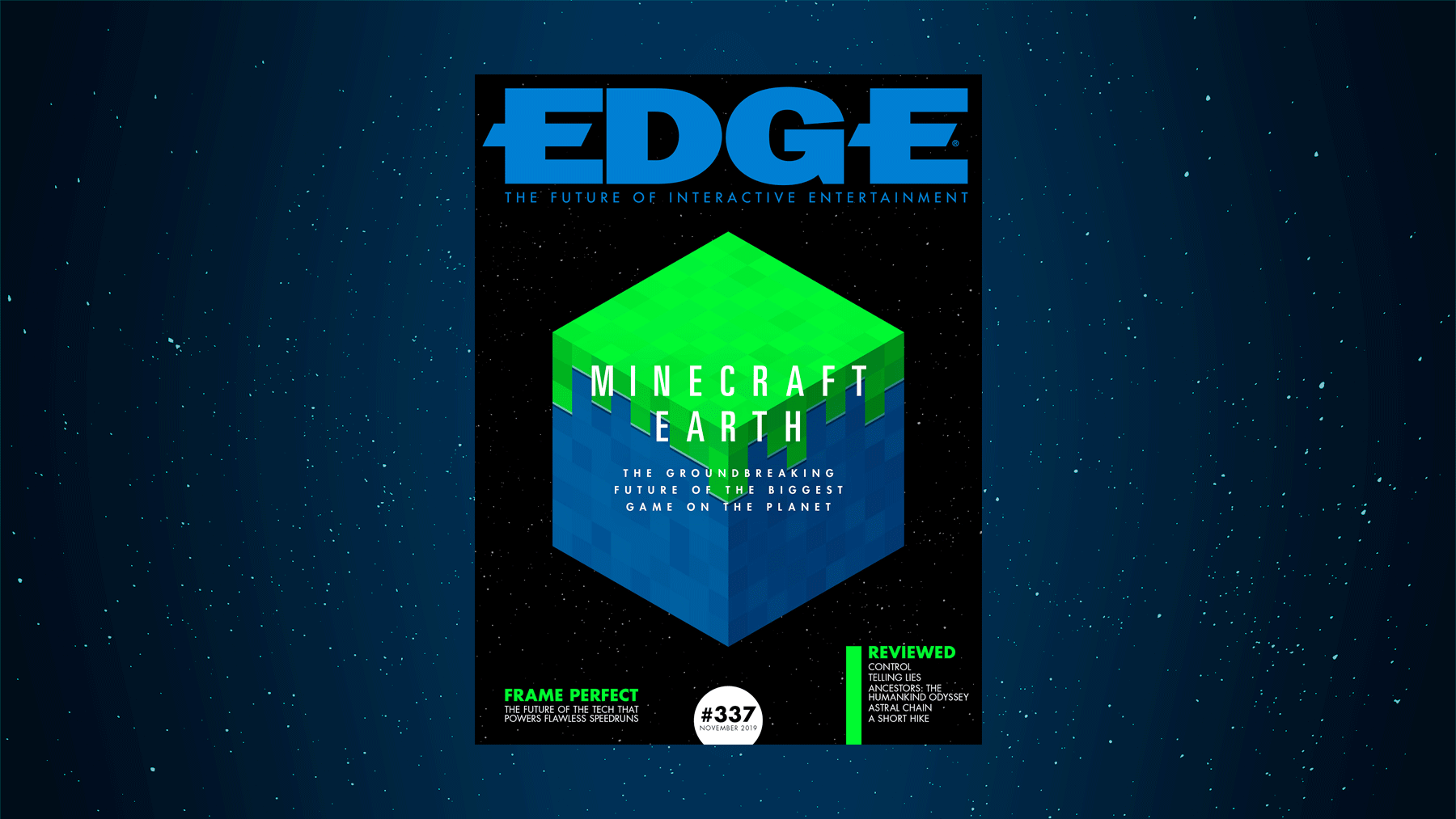
In the five years since Microsoft acquired Minecraft for an industry-shaking $2.5 billion, the company has given little away about its vision for the future of the biggest game on the planet. Under Microsoft's stewardship, Mojang has improved the cadence of game updates, and done its bit to break down industry walls through cross-platform play. But its future direction has remained vague. Minecraft Earth changes all that. It does for Mojang's game what Pokemon Go did for Game Freak's – bringing it to life, wherever you are in the world, through augmented reality.
Success – likely on a remarkable scale – seems inevitable; the appeal of being able to build anything, anywhere, then make it life-size with a tap of a smartphone screen, is irresistible. But the game’s creation has been nowhere near as straightforward. In Edge 337, arriving soon with subscribers and on sale Thursday, September 12, we go behind the scenes of Microsoft's bid to catapult an already phenomenal success to even greater heights.
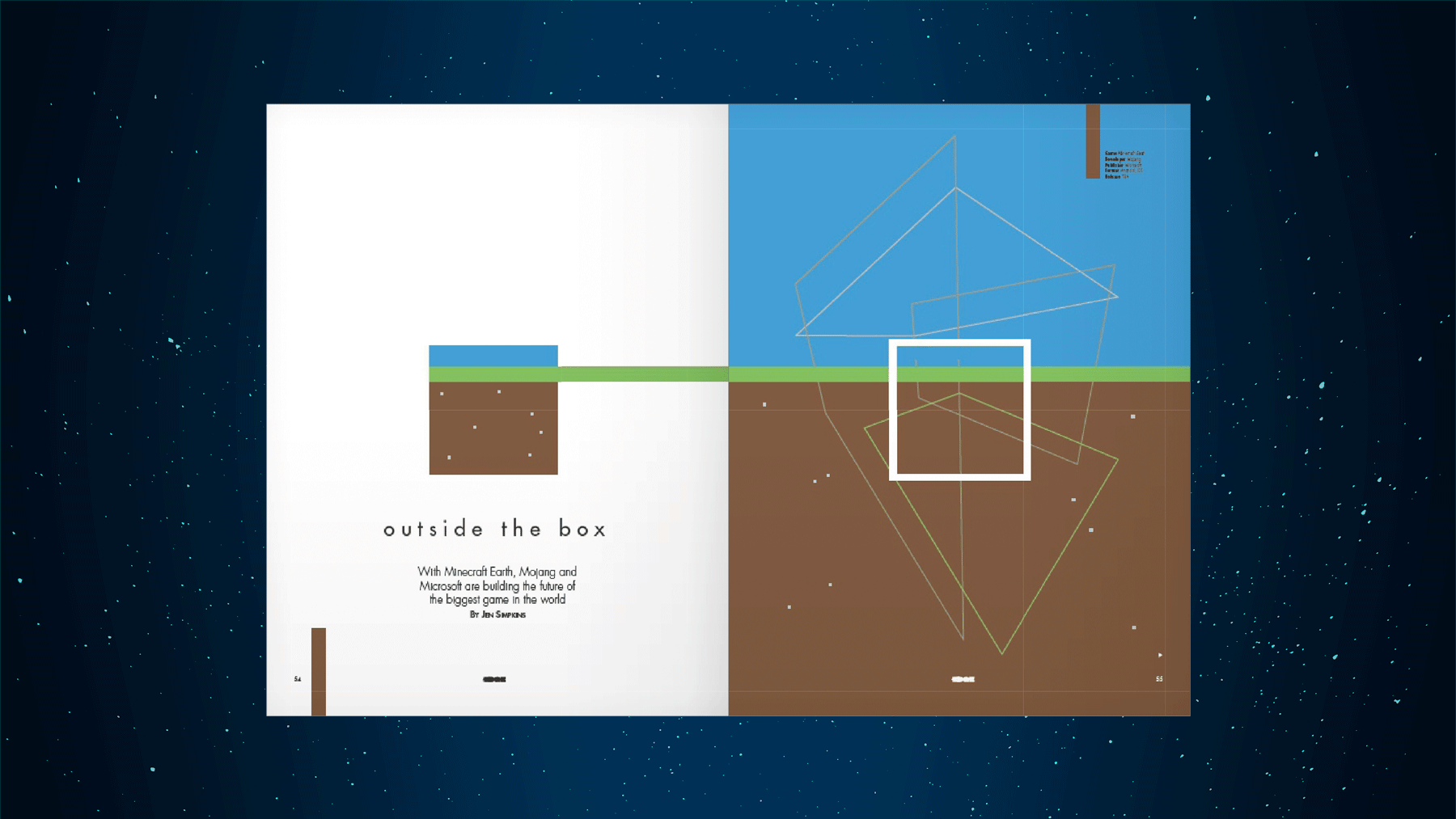
"Earth is as much a Microsoft project as a Minecraft one"
Minecraft these days is about more than Mojang; there's also a dedicated internal studio at Microsoft HQ in Redmond, Washington, and while Mojang has played a big role in the game’s development, it's the latter that’s done the heavy lifting. That's perhaps for the best: Earth is as much a Microsoft project as a Minecraft one, leaning heavily on the Azure cloud platform, and particularly its mixed-reality spatial anchors – a bespoke Microsoft technology that enables multiple users to see, and therefore work together on, the same AR Minecraft building project. It's also required expertise that not only Mojang lacks, but Microsoft also did until Minecraft Earth came along. How do you ensure a player’s safety when your game works anywhere in the world? This is not just the story of a Microsoft executive seeing Pokemon Go and their eyes turning to dollar signs. It's a complex, fascinating thing, and Edge has exclusive access behind the scenes of a project that marks the next evolution of one of the hottest videogame properties around.
Edge 337 goes on sale Thursday, September 12, available in all major UK newsagents and through digital stores worldwide. It looks like this:
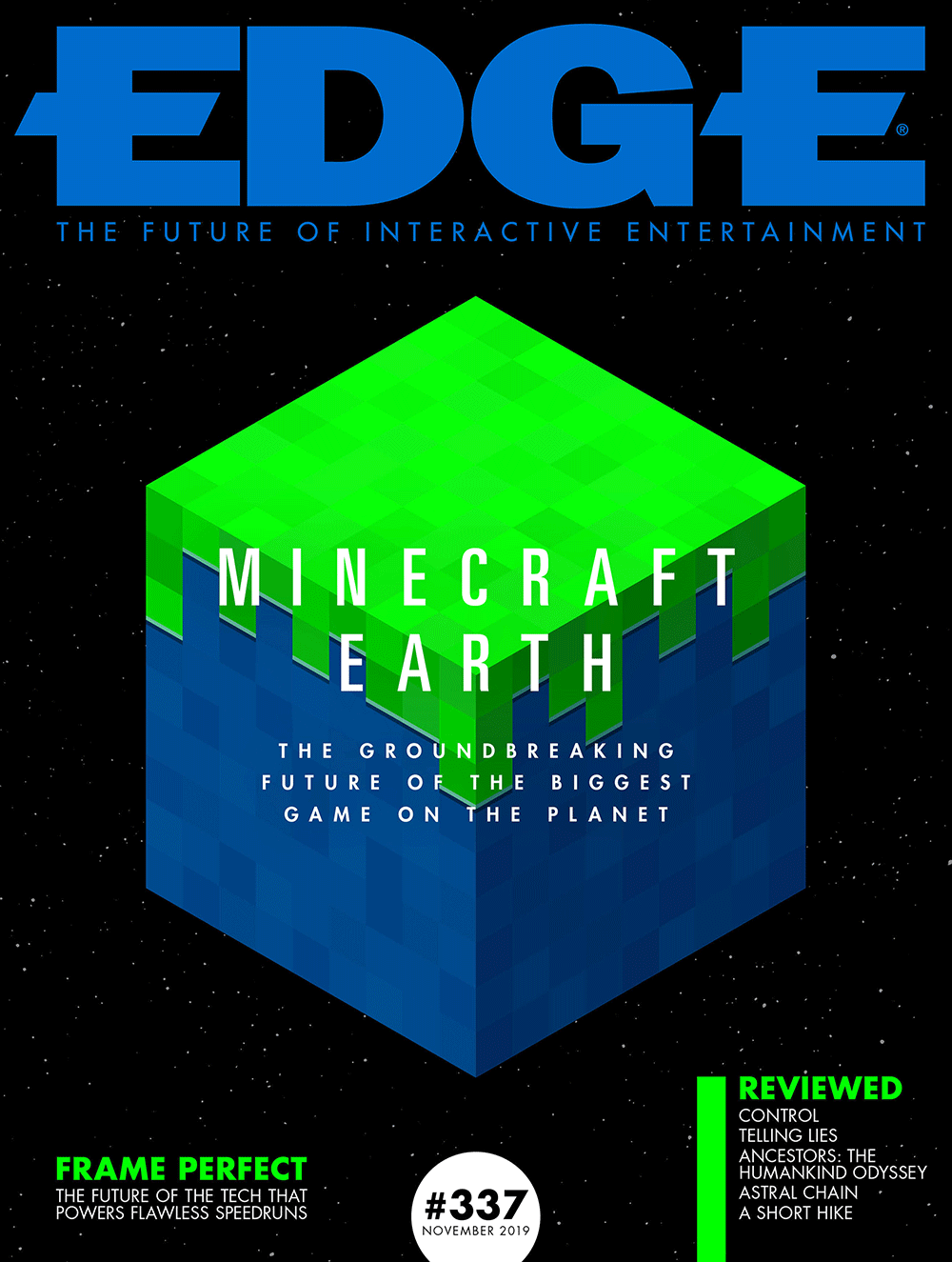
Subscriber copies will begin arriving in the coming days, and feature this exclusive, stripped-back take on the newsstand design.
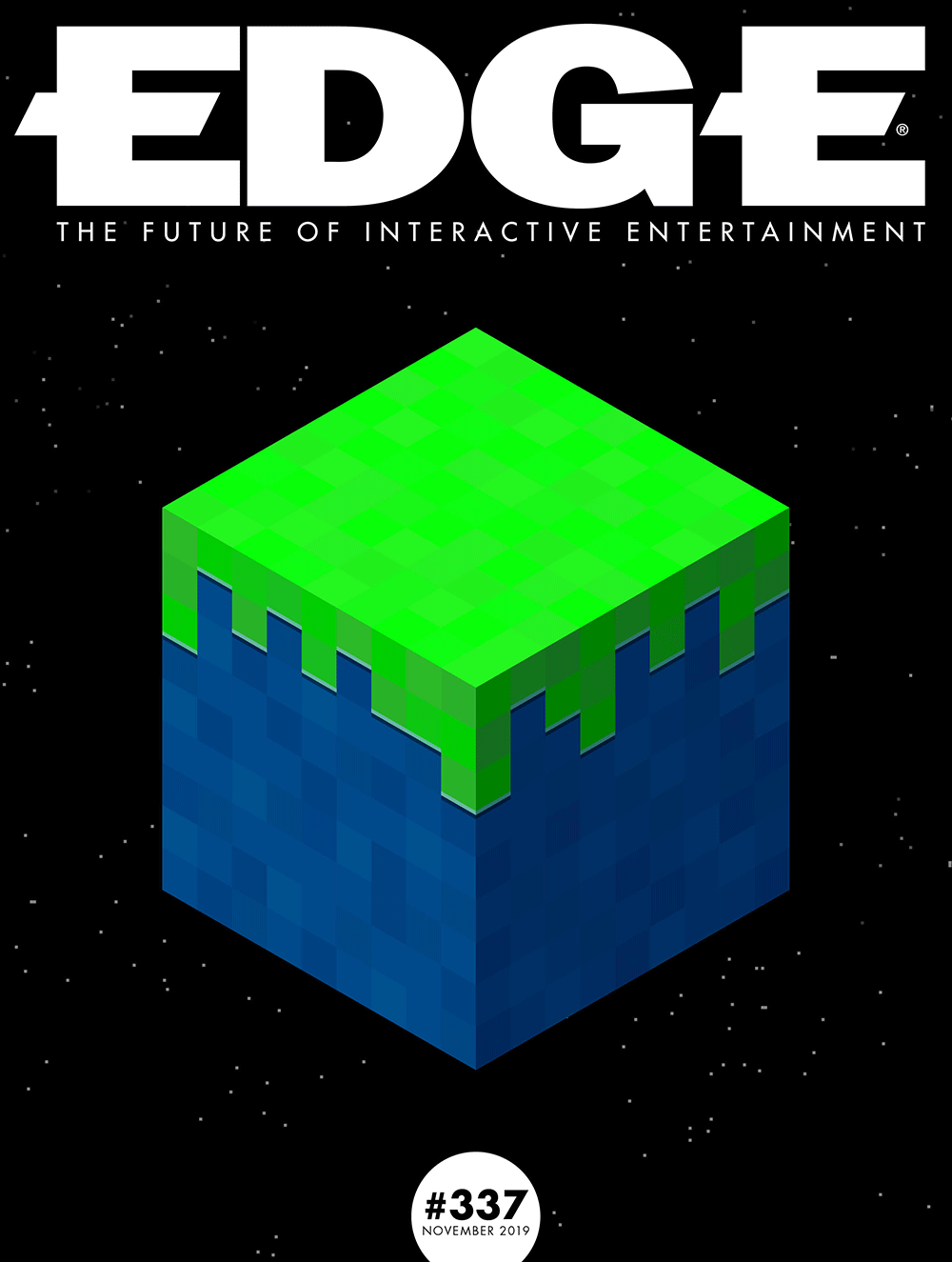
Here's a taste of what else awaits inside.
An Audience With… Helen Chiang

Helen Chiang is head of Minecraft, which is perhaps the coolest job title in the game industry. But what does that role involve? How do you effectively steer a course for something that operates on such an enormous scale? And how do you balance the very different needs of a passionate player community, and the suits who want to see a return on a colossal $2.5 billion investment? We ask all that, and plenty more besides, in a rare interview with the holder of one of the most important roles in games.
Sign up to the GamesRadar+ Newsletter
Weekly digests, tales from the communities you love, and more
Rise Of The Robot
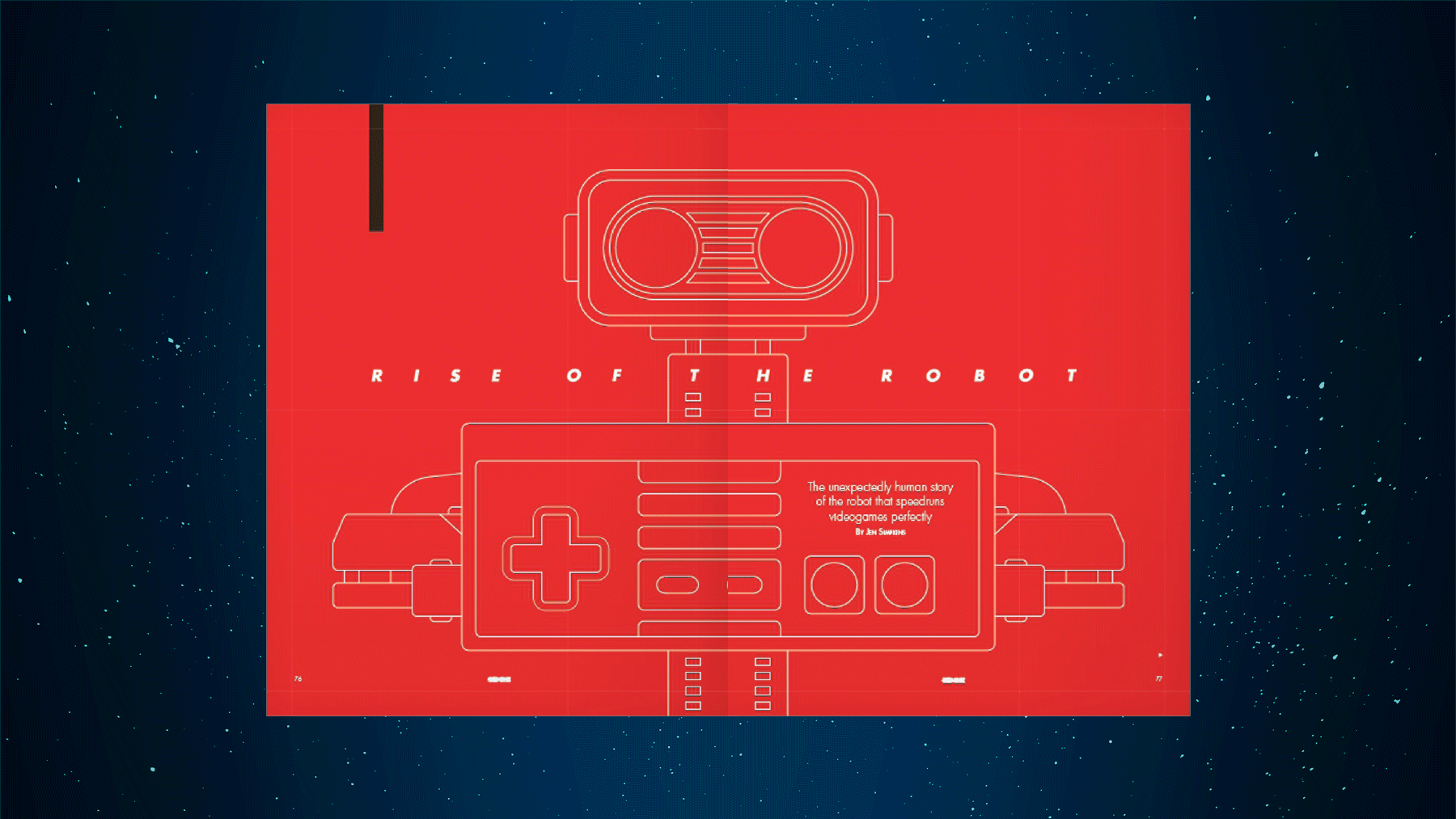
Speedruns are everything we love about videogames: lofty feats of player skill, powered by the passion of communities. But they are not perfect – or at least they weren’t, until TASbot came along. This heavily modified version of the NES buddy peripheral R.O.B. can be programmed to play games perfectly, and can even perform glitches to run unsigned, and unexpected, code during speedruns (if you haven’t seen Portal running at 5fps on a Nintendo 64, you haven’t lived). We tell the story of the bot's creation; of how initial scepticism gave way to acceptance, then to love; and how the tech behind it all might just change the way we play games.
The Making Of… Dead Cells
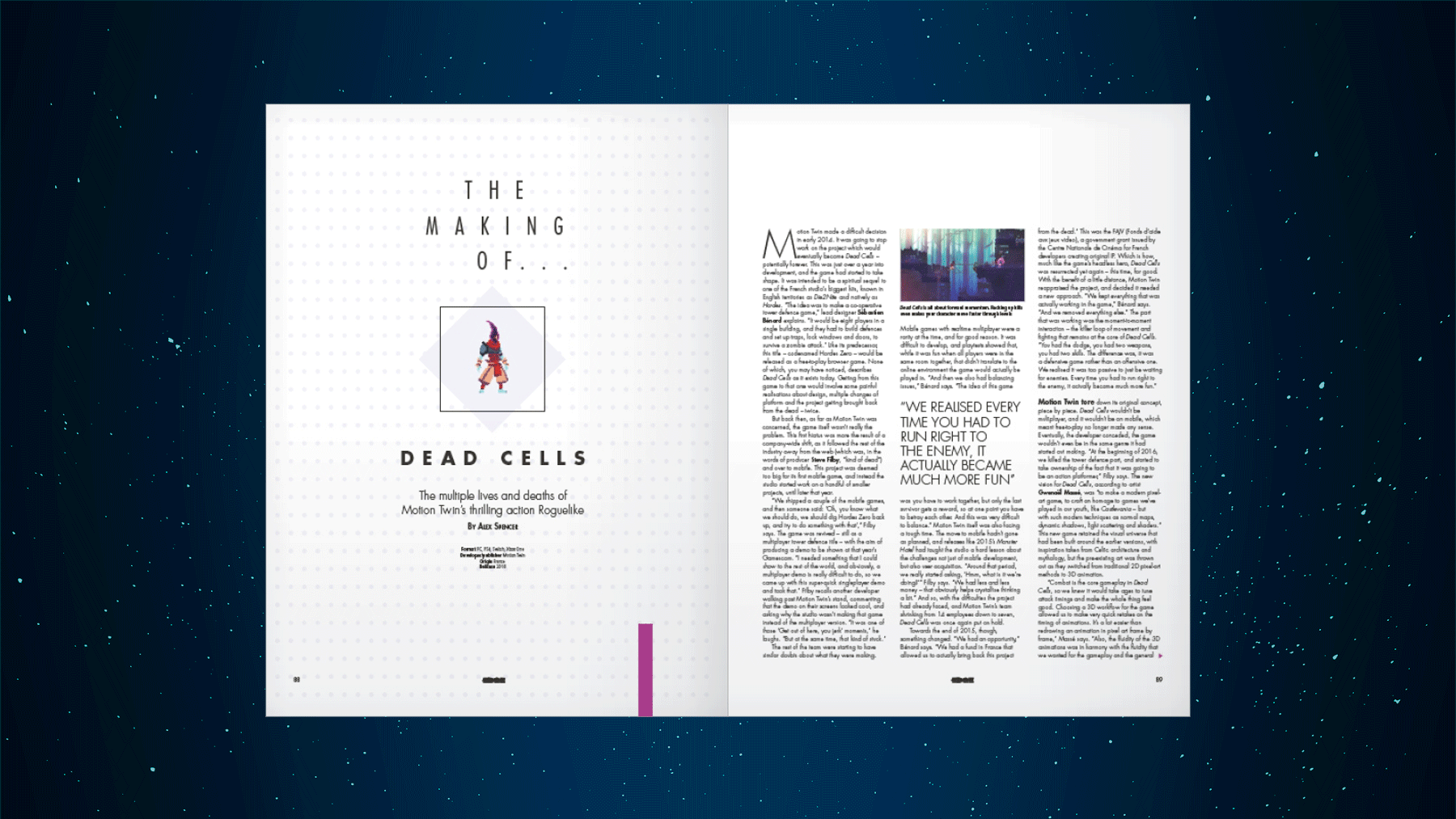
How did a little-known French developer, that had only ever made smartphone games, turn out a thrilling, award-winning action Roguelike on PC and console? Appropriately enough given the genre, Dead Cells was born from a project that was killed off, then brought back from the dead – twice.
Subscribe today
For more industry-beating access to the very best that the videogame industry has to offer, why not subscribe to Edge? You'll save on the cover price and have your copy delivered to your door (or device) each month, complete with exclusive subscriber covers.
You can subscribe to the print edition, digital version, or save even more with the print/digital bundle – whatever you choose, you can rest easy in the knowledge you're getting the full story before anyone else.
Edge magazine was launched in 1993 with a mission to dig deep into the inner workings of the international videogame industry, quickly building a reputation for next-level analysis, features, interviews and reviews that holds fast nearly 30 years on.



